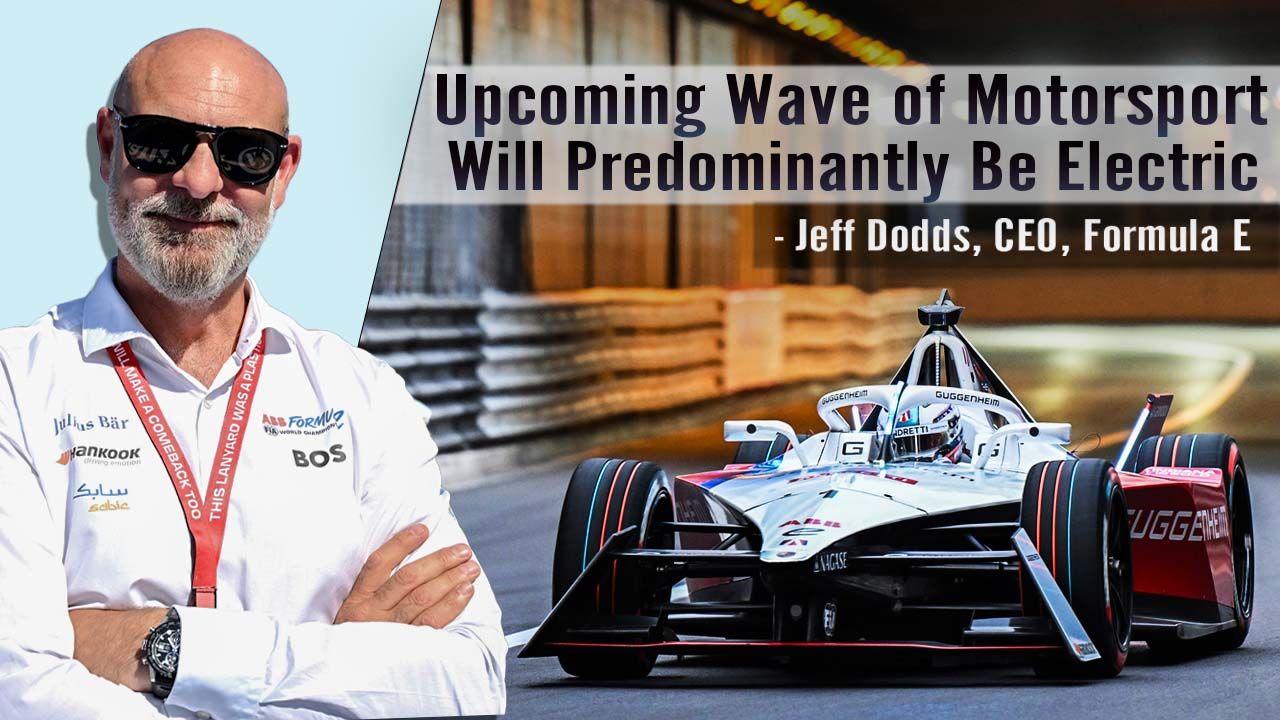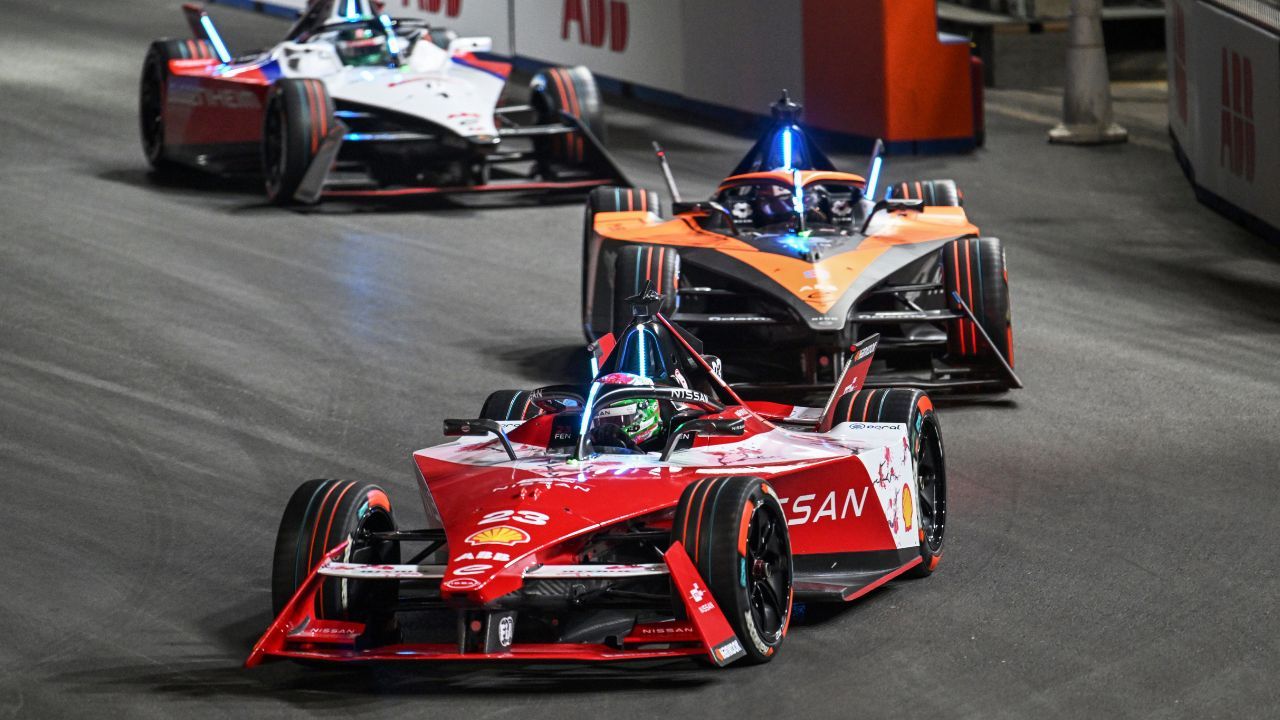
In its tenth season, Formula E CEO, Jeff Dodds recently talked about the upcoming and significant change to the electric series in an interview. Dodds discussed Formula E's global impact and expected developments, including the new Formula E GEN3 EVO. In May 2023, following Jamie Reigle's departure, Jeff Dodds assumed the role of Formula E's new chief executive. With the championship advancing its competitive profile, it aims to establish itself as a catalyst for sustainable transformation and a testing ground for electric vehicles. Despite being CEO for nearly a year, Dodds explains his vision for the championship with remarkable confidence and transparency. His ability to handle a variety of topics underscores his quick acclimatisation to the role, demonstrating a leadership poised for Formula E's next phase.
The Future of Motorsport
When asked about his views on the future of motorsports, particularly in light of many series transitioning to various fuel types and hybrid setups, Dodds said, " Electric technology and internal combustion technology were both discovered around the same time, in the late 18th century. Due to the limited range of electric cars and the convenience of charging them, internal combustion engine technology emerged as the predominant technology for road transport, a position it has held for approximately 130 to 140 years. Consequently, Motorsport has predominantly utilised the same technology.
“We are now entering an era where most governments worldwide have voiced a preference for the next phase of road transport to be electric, citing sustainability concerns with internal combustion engines. Consequently, infrastructure for charging electric vehicles is being developed. Therefore, my firm belief is that the next generation of motor racing will align with advancements in road transport technology, transitioning towards electric, deep hybrid, or full electric technology.
“While it's plausible that another technology may emerge as dominant for road transport in the future, such as hydrogen, my intuition suggests that hydrogen and similar technologies will likely find applications in aviation and marine travel, particularly for heavy-duty transportation. However, the decarbonization of road transport will likely be achieved through electric technology. Thus, it is my strong conviction that the upcoming wave of motorsport will predominantly feature electric racing.”
What New Locations Can We See on the Formula E Calendar?
When asked about what new locations we can expect to see Formula E cars racing in the future, he responded, “The calendar operates on a specific timeline. We submit a proposed calendar to the FIA. Around May, they provisionally approve it. The proposal then goes to the FIA Council for formal approval, which is usually granted. We have until May to determine the locations for the races. However, I advocate for calendar consistency. I prefer to see 60 per cent, 70 per cent, or even 80 per cent of the races return each year. This consistency helps build an audience in a particular market and establishes Formula E as a regular fixture on the annual calendar.
“Nevertheless, we are also committed to spreading our message of sustainability and technology worldwide. This necessitates adding new locations to our race roster. Currently, discussions are underway with 12 potential new locations across the globe. These discussions encompass regions in North America, China, Europe, and a significant number in Southeast Asia. While it would be premature to speculate on the specific locations, you can expect to see some familiar favourites along with a couple of exciting new races added to the mix.”
The Formula E Cars
When asked about the expected variations in performance levels between Gen3, Gen3 Evo, and Gen4, he responded, “There is a significant leap. If we reflect on the progression from Gen 1 to Gen 2, and then to Gen 3, each iteration has represented a substantial advancement. We did contemplate an Evo update during Gen 2, but due to the challenges posed by lockdowns and the COVID-19 pandemic, it was a decision the business opted not to pursue at that time. Hence, I perceive the leap from Gen 3 to Gen 3 Evo as considerable, with enhancements such as the introduction of dual powertrains, a significant boost in acceleration, new tyres, revised bodywork, and altered aerodynamics. However, the transition to Gen 4 has already garnered attention; it promises a notably more potent vehicle with a larger battery capacity, a shift to Bridgestone as the sole tyre supplier, and the incorporation of features like power steering. Thus, the progression from Gen 3 Evo to Gen 4 represents a substantial advancement in every aspect.”
Also Read: Formula E Unveils New Gen3 EVO Car; Here's All You Need to Know
Formula E Fast Charging Pit Stop
When asked how fast charging could enhance the excitement of the races, he responded, "Fast charging is undeniably a cutting-edge technology currently under development. We aim to introduce it into the race series in the near future. Pit stops have long been a feature in motorsport, whether in the old days of Formula One where they were utilised for refuelling and tyre changes, or in modern times primarily for tyre changes or repairs. Pit stops create moments of excitement and suspense during races. In Formula E, due to our focus on sustainability, there is no mandatory pit stop requirement for tyre changes, as the cars are highly efficient and durable. However, incorporating fast charging technology into pit stops would not only introduce a thrilling strategic element but also showcase technological advancements. Teams would need to carefully strategise when to utilise fast charging, adding depth to race strategies. Moreover, it would introduce an element of risk, as manoeuvring potentially 22 cars off the racing line into the pit and back onto the track safely and swiftly would require skill and precision. Therefore, integrating fast charging into pit stops could bring an exciting dimension to Formula E races.
“That being said, it's important to note that our races are already highly exciting. Formula E is currently regarded as one of the most thrilling forms of motorsport in the world. Hence, we must ensure that any changes introduced do not detract from the excellent racing product we already offer.”


























Write your Comment